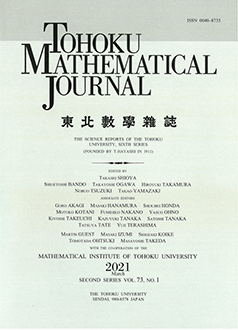Abstract
Nevanlinna showed that for two nonconstant meromorphic functions on the complex plane, if they have the same inverse images counting multiplicities for four distinct values, then they coincide up to a Möbius transformation, and if they have the same inverse images for five distinct values, then they coincide. Fujimoto and Smiley extended Nevanlinna's uniqueness theorems to the case of meromorphic mappings of several complex variables into the complex projective space for hyperplanes. Recently, Motivated by Ru Min and Stoll's accomplishment of the second main theorem for moving targets, Li Baoqin and Shirosaki proved some uniqueness theorems of entire functions in several complex variables and meromorphic functions in one complex variable, respectively, for moving targets. Using the techniques of value distribution theory in several complex variables, we prove some uniqueness theorems of meromorphic mappings of several complex variables into the complex projective space for moving targets.
Citation
Zhen-Han Tu. "Uniqueness problem of meromorphic mappings in several complex variables for moving targets." Tohoku Math. J. (2) 54 (4) 567 - 579, 2002. https://doi.org/10.2748/tmj/1113247649
Information





